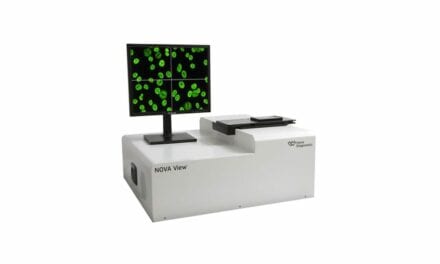Due in part to climate change, wilderness encroachment, and better diagnoses, alpha-Gal Syndrome (AGS) has joined a growing list of both tick-borne and allergic diseases. The good news: There’s a blood test for it.
By Chris Wolski
Summary:
Alpha-Gal Syndrome (AGS) is an emerging tick-borne allergy caused by a bite from the Lone Star tick, leading to delayed allergic reactions to mammalian meat and products, and presents unique diagnostic and management challenges.
Takeaways:
- Delayed reactions make diagnosis tricky: AGS symptoms often appear hours after eating meat, making it hard to link cause and effect without a high index of suspicion.
- Blood testing is key for diagnosis: Skin prick tests are ineffective; IgE blood tests, along with symptom history, are essential to confirm AGS.
- Labs play a vital role in awareness: By offering AGS testing and educating healthcare providers, labs can help identify cases and raise awareness about this growing public health concern.
Over the past several decades, due in part to climate change, land development, and better diagnostic modalities, there has been a steady increase in tick-borne related diseases. These diseases are now estimated to be responsible for 75% of all vector-borne diseases in the United States1.
Many of these tick-borne diseases are well known—Lyme disease chief among them—but others are emerging and presenting with new, unexpected effects. Alpha-Gal Syndrome (AGS) is one of those. A bite from a tick carrying this disease causes humans to become allergic to meat and other mammalian byproducts.
CLP recently spoke with Gary Falcetano, PA-C, AE-C, the U.S. scientific affairs manager for allergy at Thermo Fisher Scientific, about the rise of AGS and allergies in general, the challenges of diagnosing it, and how labs can help raise awareness of this unexpected and devastating condition. Falcetano is a board certified and licensed physician assistant with more than 28 years of diverse experience in emergency and disaster medicine, primary care, and allergy and immunology.
His answers have been edited for length and clarity.
CLP: What is Alpha-Gal Syndrome?

Gary Falcetano: Alpha-Gal Syndrome (AGS), also referred to as a delayed response to meat from mammals like beef, pork, lamb and occasionally dairy items, results from an adverse reaction to a carbohydrate epitope found on proteins and lipids in non-primate mammals called galactose-α-1,3-galactose (alpha-Gal). AGS is usually contracted through tick bites in the United States, with the Lone Star tick (Amblyomma americanum) being a primary carrier of the disease. When a tick bites an individual and transmits alpha-Gal through their skin, some will develop an immune response with the subsequent production of IgE antibodies to alpha-Gal. Upon re-exposure to alpha-Gal containing foods or other substances, AGS patients exhibit symptoms.
Symptoms can range from mild to severe and typically appear within two to six hours after consuming alpha-Gal–containing foods, such as mammalian meats, though reactions have been reported as late as eight hours post-ingestion. Common signs of an allergy may involve skin symptoms such as urticaria (hives) and/or angioedema (swelling of the lips or other body areas), and internal discomfort such as abdominal pain or digestive issues, like diarrhea and nausea; in certain instances, it can result in anaphylaxis—a severe and potentially life-threatening allergic response.
CLP: Is AGS difficult to diagnose? How does it differ from diagnosing other tick-borne diseases?
Falcetano: AGS is becoming an increasingly prevalent allergic disorder, while quite rare in the past, a recent publication from the CDC estimates that 450,000 individuals may be affected in the United States.
Because the symptoms are often delayed it can be difficult for patients and clinicians to relate allergies like symptoms to ingestion of a potentially much earlier meal containing mammalian products. This is why it is vital to have a “high index of suspicion” when evaluating allergy like symptoms with no obvious cause. Especially in areas where alpha-Gal is more prevalent.
Although some patients with alpha-Gal syndrome (AGS) may experience nonspecific symptoms such as muscle pain, fatigue, and headache—similar to those seen in tick-borne illnesses like Lyme disease or Rocky Mountain Spotted Fever—these infections typically present with distinguishing features such as characteristic rashes, persistent fever, and chills. In contrast, AGS is primarily defined by classic allergic reactions, including angioedema, urticaria, gastrointestinal symptoms, and anaphylaxis.
To accurately diagnose AGS, health care providers (HCPs) use a blood test to determine the level of IgE antibodies to alpha-Gal. As with any suspected allergy, it is important to test only patients who have a history and symptoms consistent with AGS. It is therefore recommended that HCPs consider patients who have symptoms, such as delayed allergic reactions to mammalian meat, and especially those who are likely to have been exposed to ticks that transmit the condition, particularly in areas with high prevalence of Lone Star ticks. In addition to patient symptoms and tick exposure, HCPs will also consider the patient’s medical history, including any prior allergic reactions and other possible triggers.
What sets alpha-Gal syndrome (AGS) apart from most other food allergies is its delayed symptom onset. Whereas typical food allergies cause reactions shortly after ingestion, AGS symptoms may appear three to six hours (or more) after consuming red meat or dairy products. This delay can be especially confusing for individuals with no prior history of meat allergy and often makes it more difficult to identify the trigger, as the connection between the food and symptoms may not be immediately obvious.
CLP: A blood test is one of the primary ways to diagnose AGS. Are there best practices related to when and to whom to give the test? In other words, why don’t PCPs just test everybody for it?
Falcetano: As with most diagnostic tests and especially with allergy sensitization tests, it is important to test individuals who are suspected of having a potential allergy based on medical history and symptoms. The presence of specific IgE antibodies indicates allergic sensitization but is not, by itself, diagnostic of clinical allergy. A positive test result must be correlated with clinical symptoms to confirm any suspected allergy, especially in the case of AGS. There are patients who may demonstrate allergic sensitization to alpha-Gal after a tick bite and not exhibit any symptoms upon ingestion of mammalian-containing foods. This is known as an irrelevant sensitization.
A skin prick test (SPT) allergy test is generally not helpful in the diagnosis of AGS, making blood testing the most efficient and accurate way of confirming the allergy. Once a diagnosis of AGS is confirmed, the clinician and patient can work together to develop a tailored management plan that includes avoidance of alpha-Gal-containing food and other products that have been identified as provoking symptoms. Some patients are unable to tolerate even trace amounts of alpha-Gal and others may not experience symptoms unless they are exposed to high levels of alpha-Gal such as those found in organ meats. Working with an experienced clinician as well as other professionals such as registered dieticians is essential to managing AGS. While AGS may be a lifelong condition there are patients who have been able to resume consumption of mammalian products after a period of time without additional tick bites and subsequent reductions in their sensitization levels.
CLP: Allergies seem to be increasing across the board. Where does AGS fit into the allergen continuum?
Falcetano: AGS represents a unique and relatively recent addition to the growing spectrum of allergies that have emerged in the past few decades. Traditionally, allergies have been associated with environmental triggers, such as pollen, dust mites, pet dander, and mold. These are considered “classic” allergens, often linked to immune system reactions to environmental particles. Over time, food allergies, especially to peanuts, shellfish, and dairy have become more prevalent, leading to heightened awareness of the variety of allergens that can cause adverse reactions.
AGS, however, fits into a new category of “food” allergies that are triggered not by direct exposure to an allergen in the environment, but through the bite of a vector: ticks. This shift in understanding marks a significant departure from traditional allergy paradigms, as the trigger for AGS isn’t an environmental substance but a biologically active substance transmitted through an insect bite.
As tick populations grow and expand into new regions, particularly in North America, AGS is becoming more widespread. This change could contribute to the increasing number of people affected by allergies in general. Climate change, deforestation, and human encroachment into wildlife habitats have all played a role in the growing distribution of tick species, leading to a greater number of tick bites and, by extension, a rise in AGS cases. As a result, AGS is part of a larger trend of rising allergic diseases, which are not only becoming more common but are also more complex and diverse in their causes.
CLP: What is Thermo Fisher Scientific doing related to testing? Is AGS testing easy for labs to add to their menu or do they need specialized equipment or expertise?
Falcetano: Thermo Fisher Scientific provides the ImmunoCAP Component nGal-alpha-1,3-Gal (alpha-Gal) test, which is an important tool to aid in the diagnosis of AGS. This test is often offered by clinical laboratories as part of an alpha-Gal allergen profile that includes not only specific testing for alpha-Gal but also testing for beef, lamb, pork, and sometimes milk; all alpha-Gal containing foods. Total IgE is often included in the evaluation, as the ratio of alpha-Gal–specific IgE to total IgE has been found helpful in the diagnostic process. While the ImmunoCAP Specific IgE testing measures the presence and levels of IgE antibodies, any sensitizations must be correlated by clinicians with the patients history and symptoms to make a diagnosis of AGS and inform appropriate management.
From the laboratory point of view, the AGS testing is easy to incorporate. All ImmunoCAP tests are compatible with automated Phadia Laboratory Systems for consistent high-quality results.
CLP: How can labs help raise awareness of AGS?
Falcetano: Labs can help in the education of HCPs and patients about AGS through educational materials, especially in areas that are known to have tick borne diseases. Given its expanding geographic distribution—and the mobility of our population, who may be exposed to tick bites while traveling to endemic areas—all laboratories and clinicians should be aware of AGS and remain vigilant for potential cases.
By offering testing for AGS and discussing it with clinicians in relation to unexplained allergic reactions to mammalian meat, more cases can be recognized. Labs can also work with public health and medical associations to increase awareness and recognition of the condition among the healthcare community and the general public.
Chris Wolski is the chief editor of CLP.
Featured Image: The bite of a Lone Star tick is responsible for AGS, making it unique among allergens. Image: https://www.dreamstime.com/ondreicka_info
Reference
- Beard CB, Eisen L, Eisen RJ. The Rise of Ticks and Tickborne Diseases in the United States-Introduction. J Med Entomol. 2021 Jul 16;58(4):1487-1489. doi: 10.1093/jme/tjab064. PMID: 33939806; PMCID: PMC9620473.




